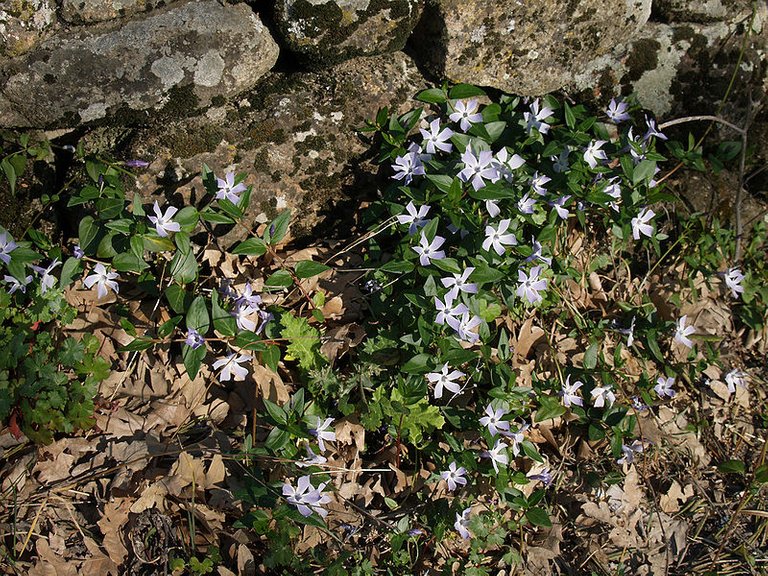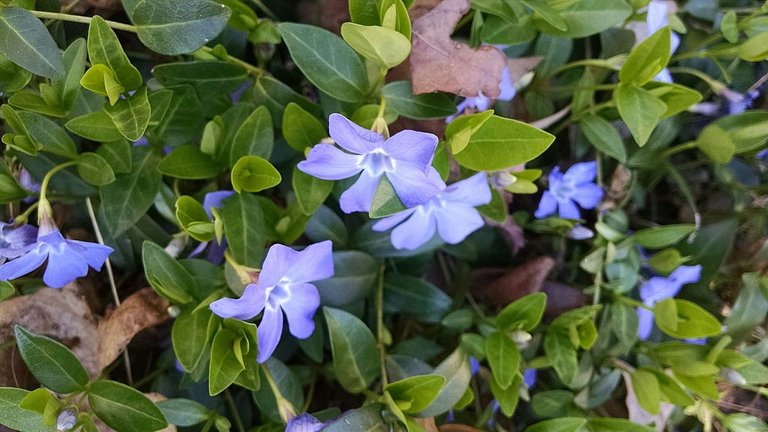Vinca plants are subshrubs or herbaceous, and have slender trailing stems 1–2 m (3.3–6.6 ft) long but not growing more than 20–70 cm (8–27.5 in) above ground; the stems frequently take root where they touch the ground, enabling the plant to spread widely. The leaves are opposite, simple broad lanceolate to ovate, 1–9 cm (0.5–3.5 in) long and 0.5–6 cm (0.20–2.36 in) broad; they are evergreen in four species, but deciduous in the herbaceous V. herbacea, which dies back to the root system in winter.
The flowers, produced through most of the year, are salverform (like those of Phlox), simple, 2.5–7 cm (0.98–2.76 in) broad, with five usually violet (occasionally white) petals joined together at the base to form a tube. The fruit consists of a pair of divergent follicles; a dry fruit which is dehiscent along one rupture site in order to release seeds.



https://fthmb.tqn.com/qZUO5mQSogfh7UavLvnMnvQQaew=/960x0/filters:no_upscale():max_bytes(150000):strip_icc():format(webp)/Vinca-minor-blooming-big-577d479d3df78cb62c7c6336.jpg
